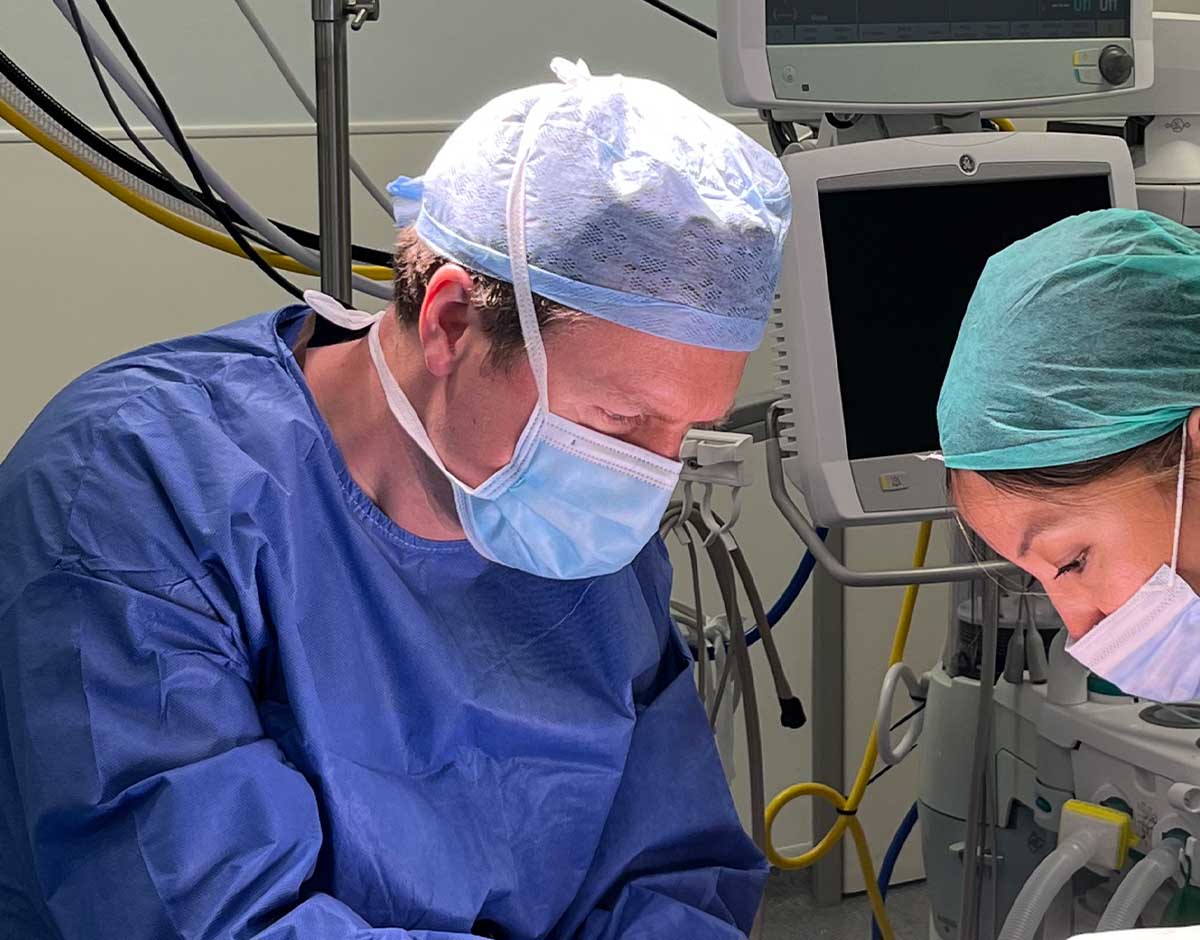-
What is Sentinel Lymph Node Biopsy for Melanoma?
Sentinel Lymph Node Biopsy (SLNB) is a diagnostic procedure used to assess whether melanoma has spread to the nearby lymph nodes. The sentinel lymph node (SLN) is the first lymph node to which cancer cells are likely to spread from the primary tumour, and are usually in the groin, arm pit or neck. A SPECT-CT scan is performed on the day of surgery to identify the lymph node(s), and the lymph node is removed during a short general anaesthetic operation.
-
Who is Suitable for Sentinel Lymph Node Biopsy for Melanoma?
SLNB is typically recommended for people with melanoma who have a 10% or greater risk of having spread of melanoma to the lymph nodes (pT1b or above). There are risk calculators that may be helpful to determine how likely spread of the disease is.
-
Is Sentinel Lymph Node Biopsy for Melanoma Painful?
SLNB is typically performed under general anaesthetic and is a short operation. Local anaesthetic is injected at the time of surgery for maximum comfort post-procedure. After the operation, there may be some discomfort or tenderness around the incision site, which can be managed with over the counter pain medications, and occasionally prescribed medications.
-
What Will Happen at My First Appointment?
At your first appointment, your diagnosis of melanoma will be reviewed in addition to your medical history. An examination of the melanoma site and lymph nodes will be performed. The procedure will be explained in detail, including the risks, benefits, and the potential outcomes. This is also the time for you to ask any questions you might have.
-
How Long Does Sentinel Lymph Node Biopsy for Melanoma Take?
The operation typically takes 30 to 60 minutes. This includes the time for injection of the blue dye, local anaesthetic, and lymph node(s) removal. The SPECT-CT imaging is prior to the surgery and typically performed on the same day, or occasionally the day before.
-
What Results Can I Expect from Sentinel Lymph Node Biopsy for Melanoma?
The results of the lymph node biopsy will typically be available within 2 weeks. If the SLNB is negative for melanoma, the risk of further issues is lower. If the SLNB is positive for melanoma, the volume and location of melanoma will be reviewed. It may be that monitoring is the preferred option. For some patients, further oncology treatment will be recommended in the form of immunotherapy or targeted therapy.
-
Are There Any Risks Associated with Sentinel Lymph Node Biopsy for Melanoma?
While SLNB is generally safe, there are some risks and potential complications. The commonest risk is a fluid collection (seroma or lymphocele), which is typically drained in clinic. This is also associated with a risk of delayed wound healing. Other risks include infection, bleeding, scar and numbness.

Sentinel Lymph Node Biopsy (SLNB)
Skin Cancer
Sentinel Lymph Node Biopsy (SLNB) is a procedure performed in melanoma management. It helps to determine if melanoma has spread to nearby lymph nodes, which is crucial for staging and planning treatment. The Sentinel Lymph Node (SLN) is the first lymph node that cancer cells are likely to spread to from the primary tumour. The sentinel lymph node can be identified by a number of techniques including Single Photon Emission Computed Tomography (SPECT-CT). The sentinel node is then removed during a surgical procedure under a short general anaesthetic and sent for assessment by a pathologist.
What Does Sentinel Lymph Node Biopsy Involve?
Prior to the biopsy, a small amount of radioactive tracer is injected around the primary melanoma site. This tracer is taken up by the sentinel lymph node(s). After the injection of the radioactive tracer, a SPECT-CT scan is performed. The SPECT component provides functional images showing where the radioactive tracer has accumulated in the lymph nodes, while the CT scan provides detailed anatomical images. This imaging procedure accurately identifies the exact location of the sentinel lymph node(s) and ensures the correct node(s) can be identified during surgery.
The procedure is performed under a short general anaesthetic in theatre, and local anaesthetic is also injected to ensure comfort after surgery. The SPECT-CT images are used in conjunction with injection of blue dye and monitoring the amount of radioactive tracer to identify the lymph node(s). A small incision is made, and the identified sentinel lymph node(s) are carefully removed for pathological examination. The skin is then stitched with dissolving sutures.
The sentinel lymph node(s) are sent to the pathology lab to be examined for melanoma cells. If melanoma cells are found, the options include ongoing surveillance, or further treatment in the form of immunotherapy or targeted therapy, prescribed by an oncologist.
Faqs | Sentinel Lymph Node Biopsy (SLNB)
“I would certainly recommend Jonathan – he was so gentle and kind aswell as an amazing doctor. I was seen two days after contacting the when I had my biopsy. Five days after that, I had my procedure. Then several weeks of follow up checkups. The clinic was lovely, great location.”
Client Review











